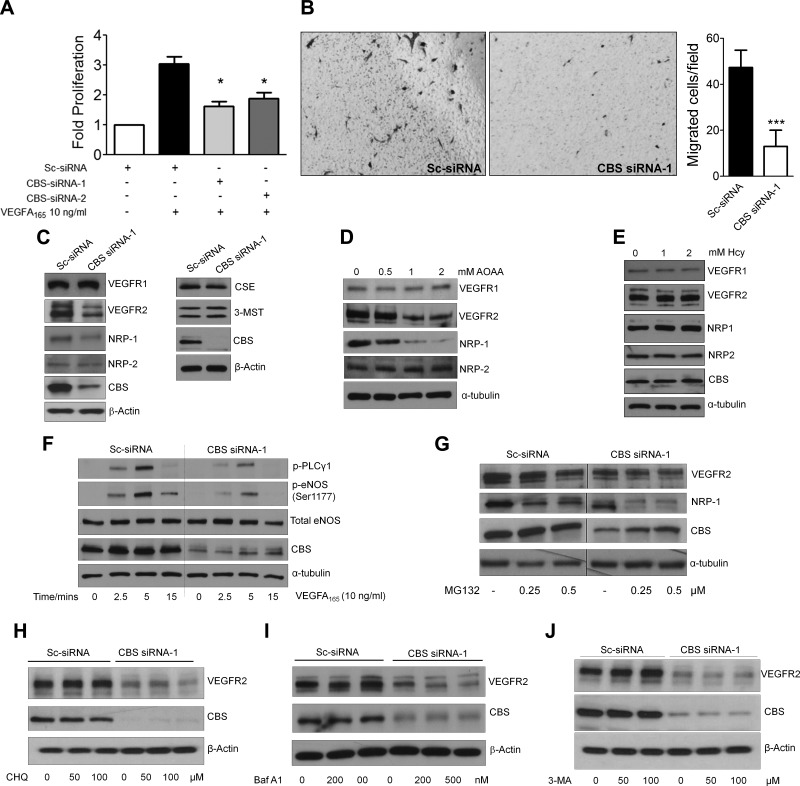Figure 4.
Silencing CBS compromises response to VEGFA. A) Effect of VEGF A165 (10 ng/ml) treatment for 24 h on the rate of proliferation of scrambled or CBS siRNA-treated HUVECs ascertained through [3H]thymidine incorporation assay. Data represent means ± sd (n = 3), 2-tailed Student’s t test. *P ≤ 0.05. B) VEGFA165-induced chemotaxis assay to ascertain the effect of silencing CBS on the migratory aptitude of HUVECs. Quantification of number of migrated cells per field of view (n = 3). *P ≤ 0.05. C) Immunoblot analysis to study levels of key endothelial proteins and H2S-synthesizing enzymes in scrambled siRNA- and CBS siRNA-1-treated HUVECs after 48 h transfection. D) Immunoblot analysis to study VEGFR1, NRP-2, VEGFR-2, and NRP-1 levels in HUVECs after 24 h treatment with various doses of AOAA. E) Effect of 1 and 2 mM Hcy (Hcy) treatment for 24 h on key endothelial protein levels in HUVECs ascertained through immunoblotting. F) Time-dependent effect of VEGF A165 (10 ng/ml) on eNOS (Ser1177) phosphorylation in scrambled or CBS siRNA-treated HUVECs after 48 h transfection determined by immunoblotting. G) Effect of various doses of proteasomal inhibitor MG132 for 24 h on scrambled and CBS siRNA-treated HUVECs. Treatment was initiated 24 h posttransfection and continued for 24 h before immunoblot analysis. H) Effect of treatment with 2 different doses of chloroquine (lysosomal inhibitor) for 6 h on scrambled and CBS siRNA-transfected HUVECs, 48 h posttransfection. I) Effect of treatment with 2 different doses of Bafilomycin A1 (lysosomal inhibitor) on scrambled control and CBS siRNA-transfected HUVECs 48 h posttransfection. Treatment was initiated 42 h posttransfection for 6 h and then subjected to immunoblot analysis. J) Effect of treatment with 2 different doses 3-methyl adenine (autophagy inhibitor) on scrambled control and CBS siRNA-transfected HUVECs, 48 h posttransfection. Treatment was initiated 42 h posttransfection for 6 h and then subjected to immunoblot analysis.

